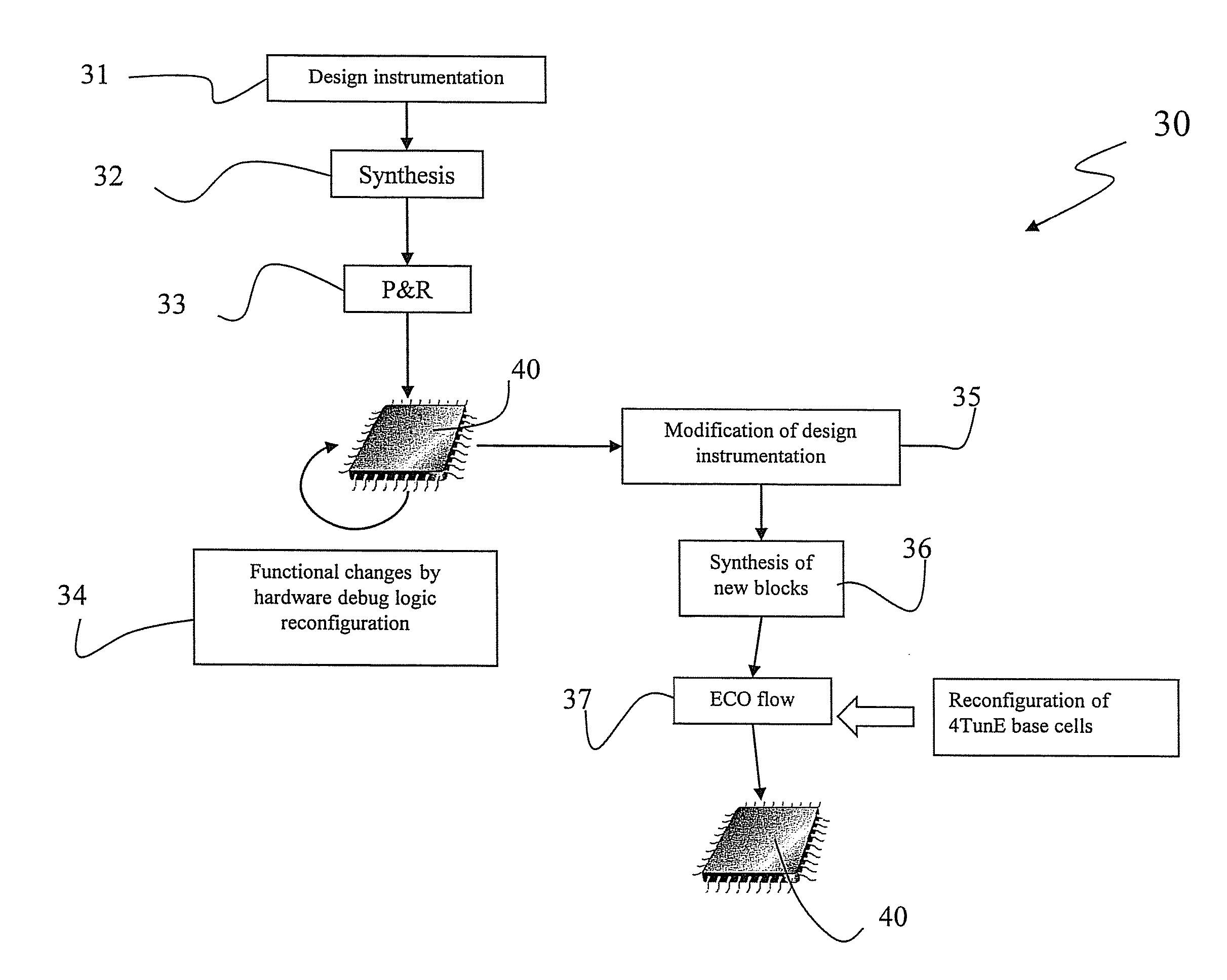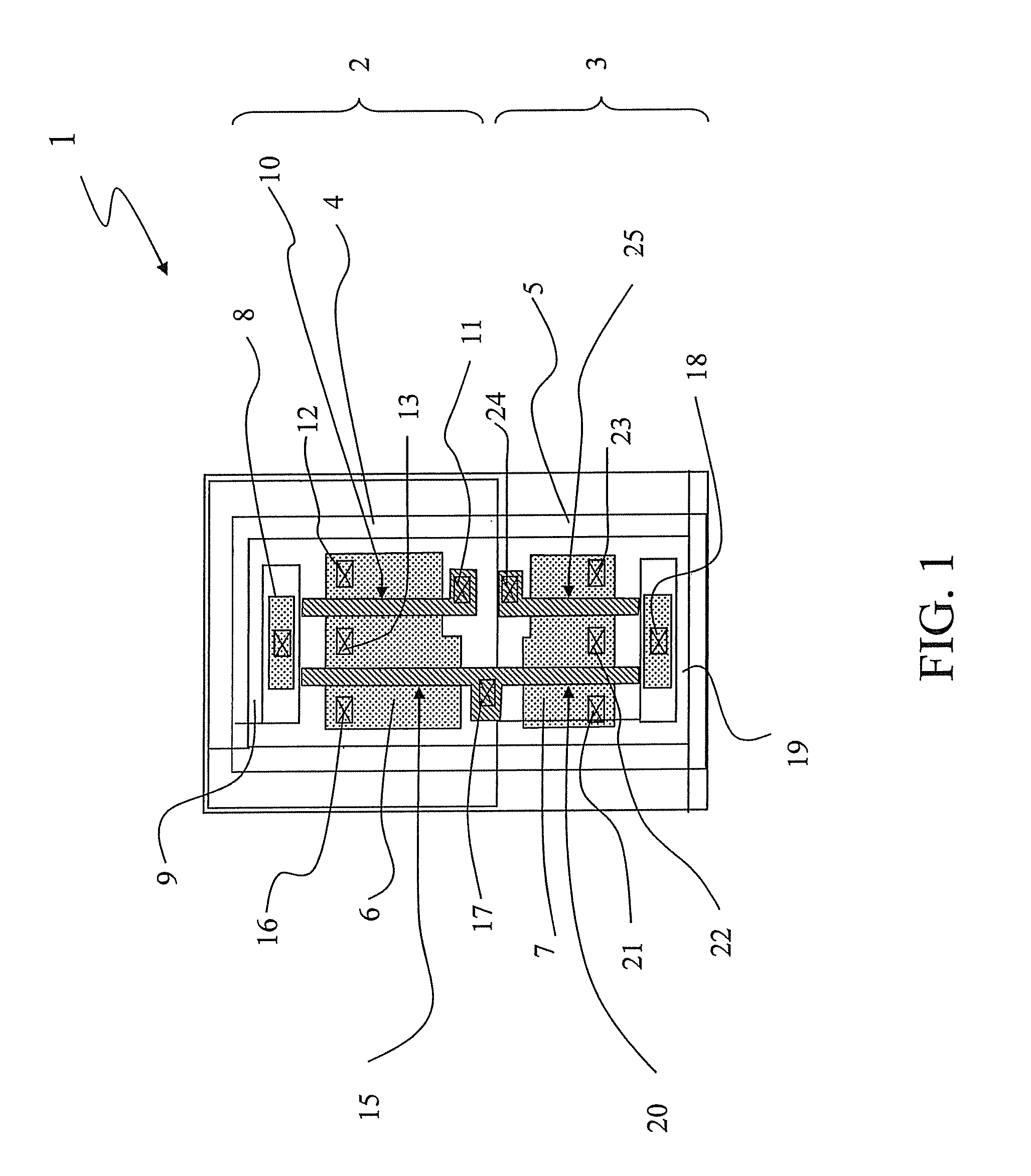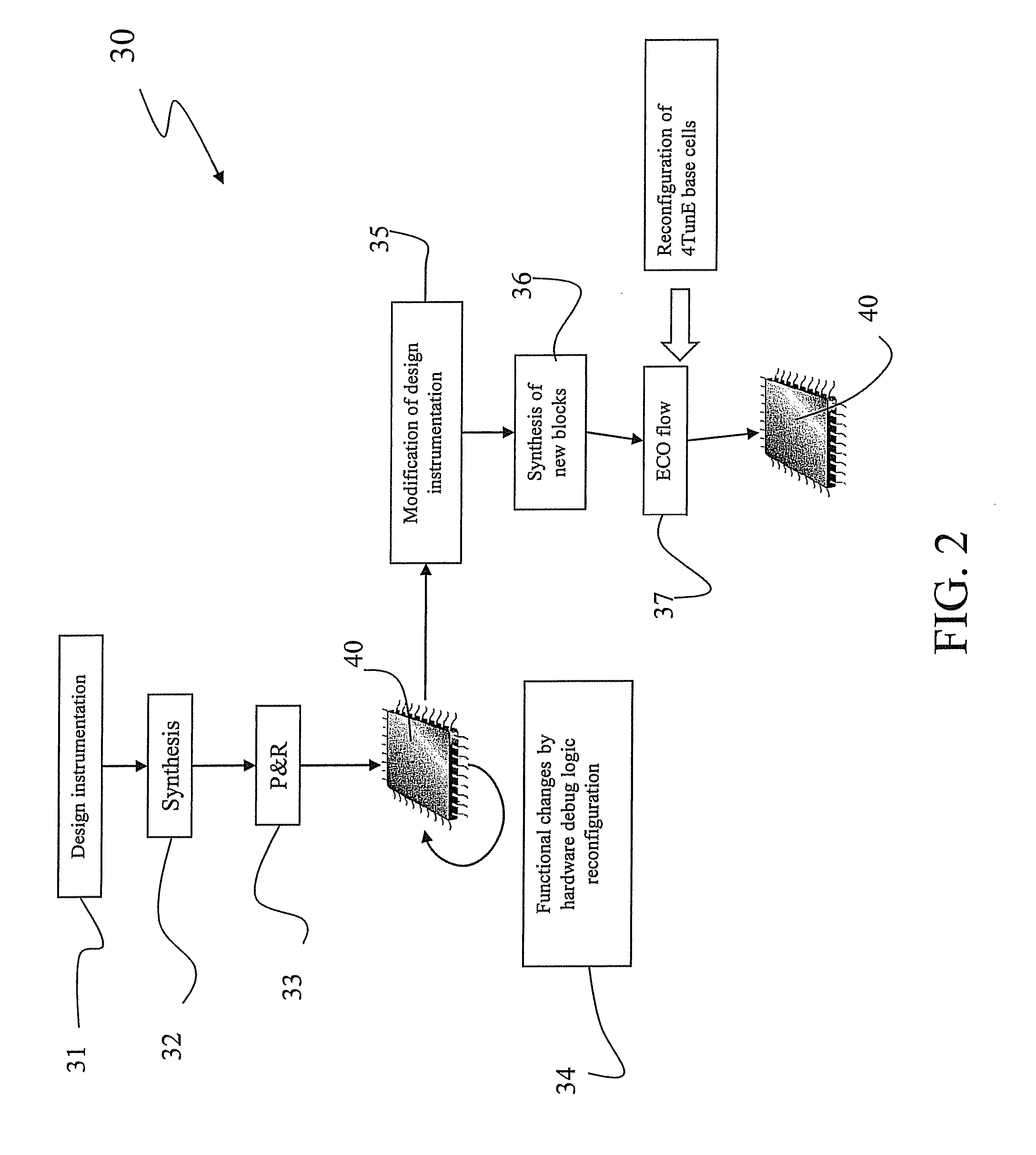Method for implementing functional changes into a design layout of an integrated device, in particular a system-on-chip, by means of mask programmable filling cells
a technology of functional changes and design layouts, applied in logic circuits, specific program execution arrangements, program control, etc., can solve the problems of inflexibility, inability to implement a certain type of logic cells, and increasing complexity of integrated circuit scales and designs, etc., to reduce design revision time and cost.
- Summary
- Abstract
- Description
- Claims
- Application Information
AI Technical Summary
Benefits of technology
Problems solved by technology
Method used
Image
Examples
Embodiment Construction
[0037]Referring specifically to FIG. 1, a top view of a layout of an Engineering Change Order (ECO) base cell 1 according to the present invention is shown. It should be noted that the base cell 1 is asymmetrical because of the lack of a virtual center line, with respect to which all patterns of material layers are symmetrically mirrored. In particular, according to this embodiment, the base cell 1 comprises four devices, such as NMOS transistors and PMOS transistors. A P side 2 and an N side 3 are thus defined in the base cell 1.
[0038]In particular, an N-well 4 provides a substrate wherein two PMOS transistors are formed and a P-well 5 provides a substrate wherein two NMOS transistors are formed. A P+ region 6 and an N+ region 7 are implanted on the substrates provided respectively by the N-well 4 and the P-well 5. In particular, the P+ implant of the P+ region 6 forms the source and drain regions of the PMOS transistors, as well as the N+ implant of the N+ region 7 forms the sourc...
PUM
 Login to View More
Login to View More Abstract
Description
Claims
Application Information
 Login to View More
Login to View More - R&D
- Intellectual Property
- Life Sciences
- Materials
- Tech Scout
- Unparalleled Data Quality
- Higher Quality Content
- 60% Fewer Hallucinations
Browse by: Latest US Patents, China's latest patents, Technical Efficacy Thesaurus, Application Domain, Technology Topic, Popular Technical Reports.
© 2025 PatSnap. All rights reserved.Legal|Privacy policy|Modern Slavery Act Transparency Statement|Sitemap|About US| Contact US: help@patsnap.com



